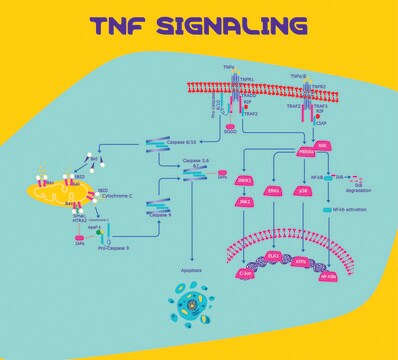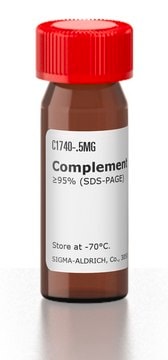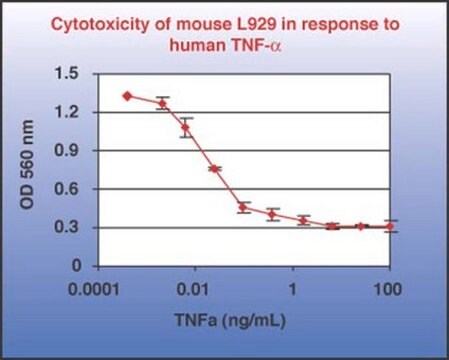I3901
IL-1α rat
≥97% (SDS-PAGE), recombinant, expressed in E. coli, lyophilized powder, suitable for cell culture
Sinónimos:
rIL-1α, IL-1α, Lymphocyte activating factor
About This Item
Productos recomendados
product name
Interleukin-1α from rat, IL-1α, recombinant, expressed in E. coli, lyophilized powder, suitable for cell culture
origen biológico
rat
Nivel de calidad
recombinante
expressed in E. coli
Análisis
≥97% (SDS-PAGE)
formulario
lyophilized powder
potencia
1-10 pg/mL ED50
calidad
endotoxin tested
mol peso
~18 kDa
envase
pkg of 5 μg
técnicas
cell culture | mammalian: suitable
impurezas
≤0.1 EU/μg
Nº de acceso UniProt
temp. de almacenamiento
−20°C
Información sobre el gen
rat ... Il1a(24493)
Acciones bioquímicas o fisiológicas
Forma física
Nota de análisis
Código de clase de almacenamiento
11 - Combustible Solids
Clase de riesgo para el agua (WGK)
WGK 3
Punto de inflamabilidad (°F)
Not applicable
Punto de inflamabilidad (°C)
Not applicable
Equipo de protección personal
Eyeshields, Gloves, type N95 (US)
Certificados de análisis (COA)
Busque Certificados de análisis (COA) introduciendo el número de lote del producto. Los números de lote se encuentran en la etiqueta del producto después de las palabras «Lot» o «Batch»
¿Ya tiene este producto?
Encuentre la documentación para los productos que ha comprado recientemente en la Biblioteca de documentos.
Artículos
The Interleukins comprise a disparate group of cytokines and growth factors that are produced by and released from leukocytes. Interleukin-1β (1L-1β) is released primarily from stimulated macrophages and monocytes and plays a key role in inflammatory and immune responses and may induce anti-tumor immunity.
Nuestro equipo de científicos tiene experiencia en todas las áreas de investigación: Ciencias de la vida, Ciencia de los materiales, Síntesis química, Cromatografía, Analítica y muchas otras.
Póngase en contacto con el Servicio técnico







